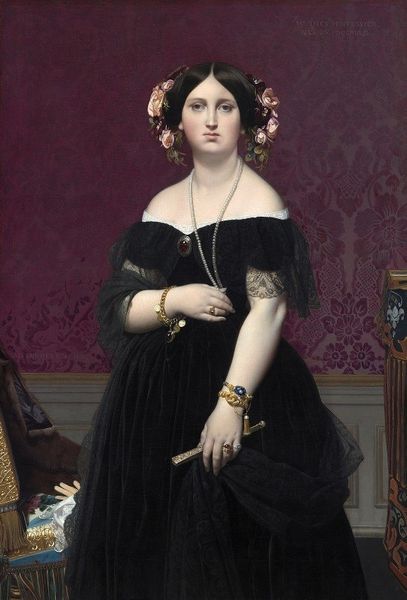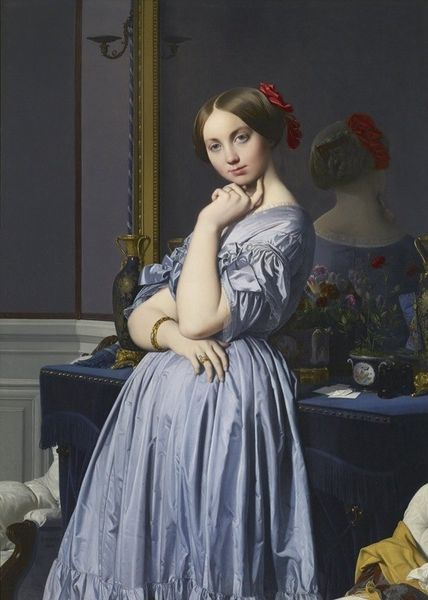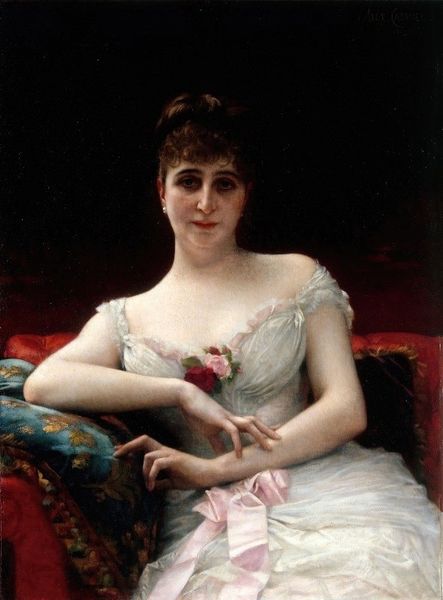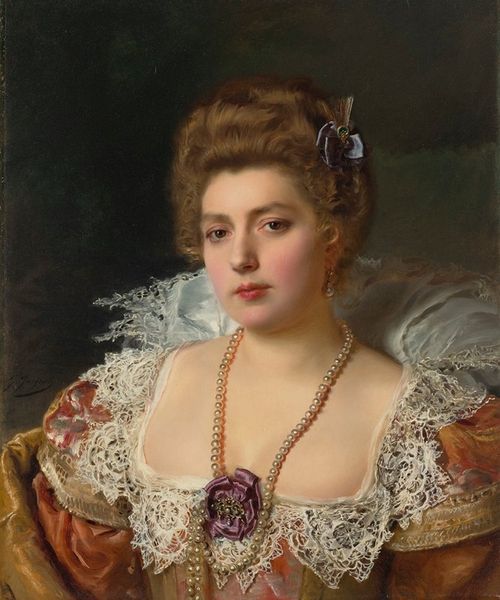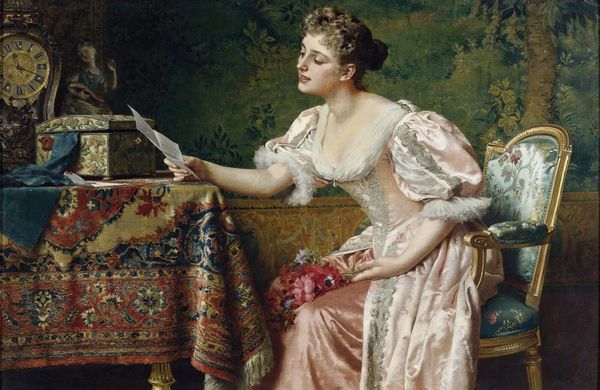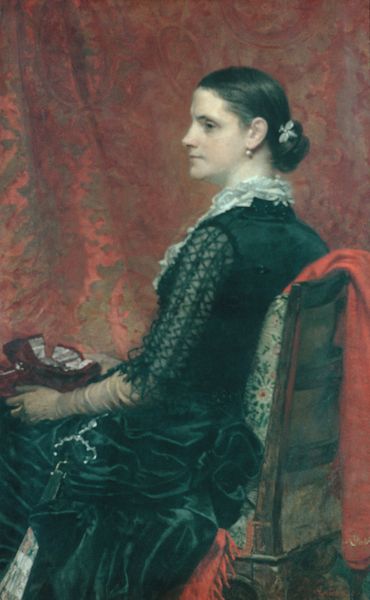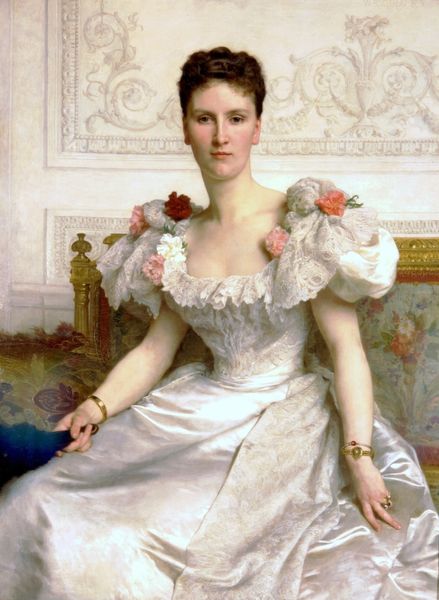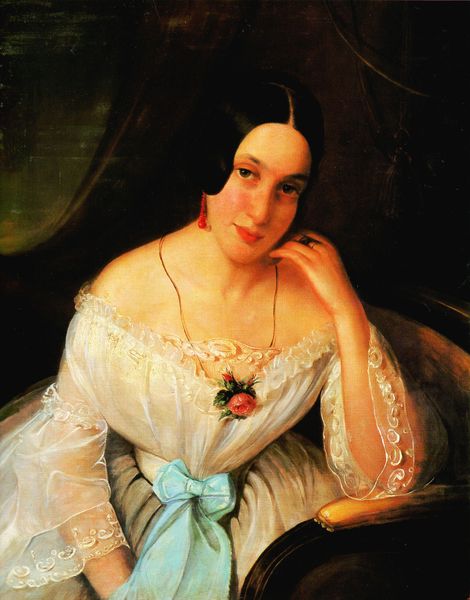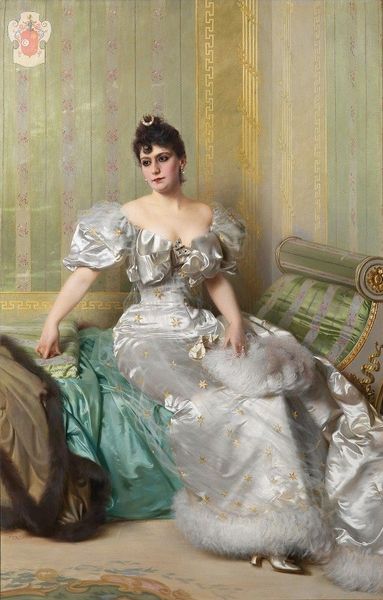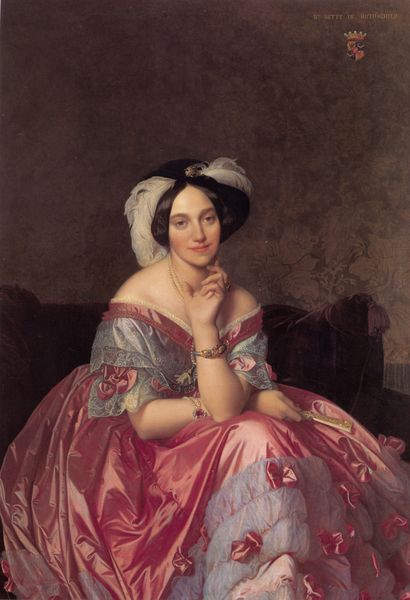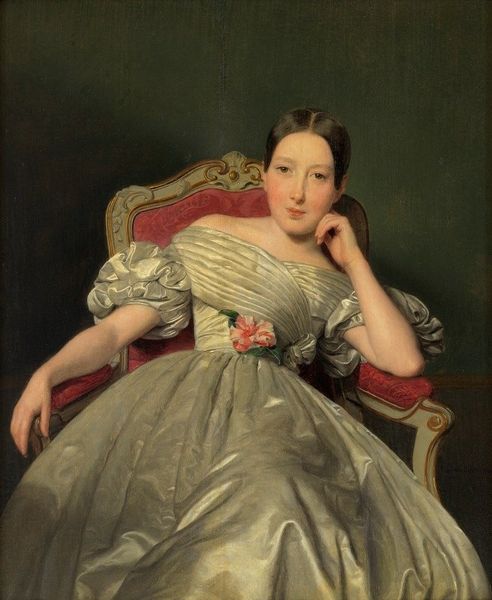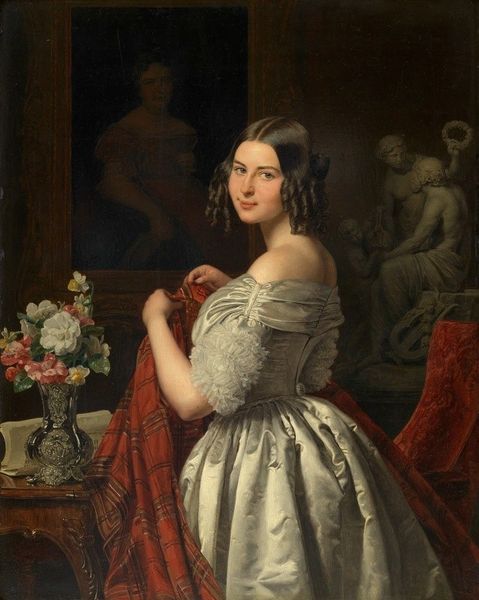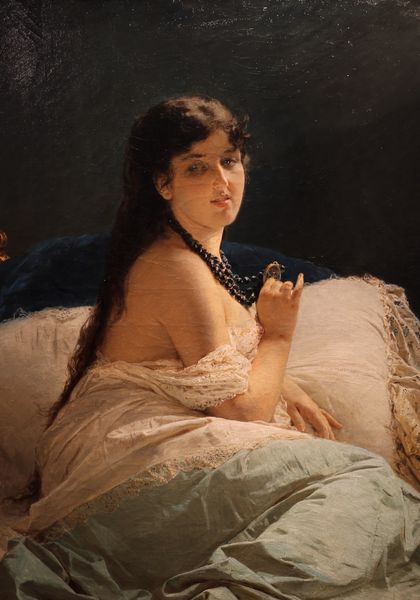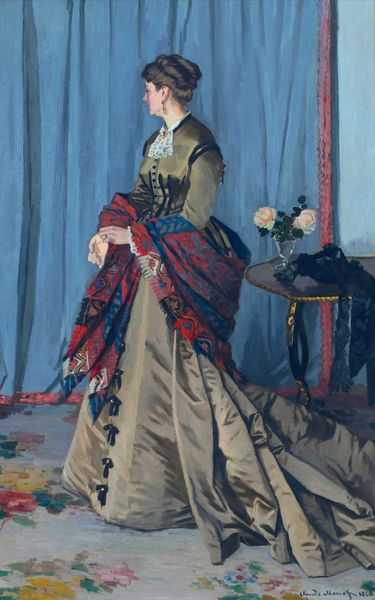
Portrait of Madame Moitessier Sitting 1856
0:00
0:00
Dimensions: 120 x 92.1 cm
Copyright: Public domain
What are your first impressions of this portrait? The French painter Jean-Auguste-Dominique Ingres (1780-1867) completed this portrait of Marie-Clotilde-Inès Moitessier in 1856… twelve entire years from the date that it had been commissioned. Marie-Clotilde-Inès Moitessier (1821-1897) was the daughter of a wealthy civil servant. In 1842, she married an elderly banker known as Sigisbert Moitessier. Ingres initially refused when Moitessier requested a portrait of his new wife, as the painter preferred prestigious genres such as history painting to portraiture. Yet, upon seeing Marie’s beauty, he was convinced that he could create a masterpiece. Madame Moitessier sits in an opulent pink velvet chaise lounge. She wears an extravagant floral dress in white silk, complete with bows and pastel-coloured tassels. She gazes out towards the viewer, suggesting an easy confidence. One hand gently rests against her face, index finger slightly raised. Ingres took this pose directly from a 1st-century fresco which had been discovered during excavations of the ancient Roman town of Herculaneum. During this time, neoclassicism was seen as the gold standard for art in France. Characterised by grandeur and a sense of stability, neoclassicism took inspiration from the art of ancient Rome and Egypt. This was partly a result of Napoleon Bonaparte’s rise to power; French neoclassicism is also referred to as ‘the Empire style’. Here, Ingres displays the regal magnificence associated with the Empire style. The portrait clearly communicates the wealth of Madame Moitessier. It seems like a successful painting – so why did it take so long to finish? The delay was partly down to Moitessier’s daughter, Catherine. Ingres had originally intended to depict the mother and daughter together, yet the young child was unable to stay still for long enough to pose for him. The portrait was also delayed as a result of the deaths of Madame Moitessier's father and Ingres’s wife. Ingres was consequently forced to repaint Madame Moitessier’s outfit, as fashions had shifted in the time that it had taken him to complete the portrait.
Comments
No comments
Be the first to comment and join the conversation on the ultimate creative platform.
